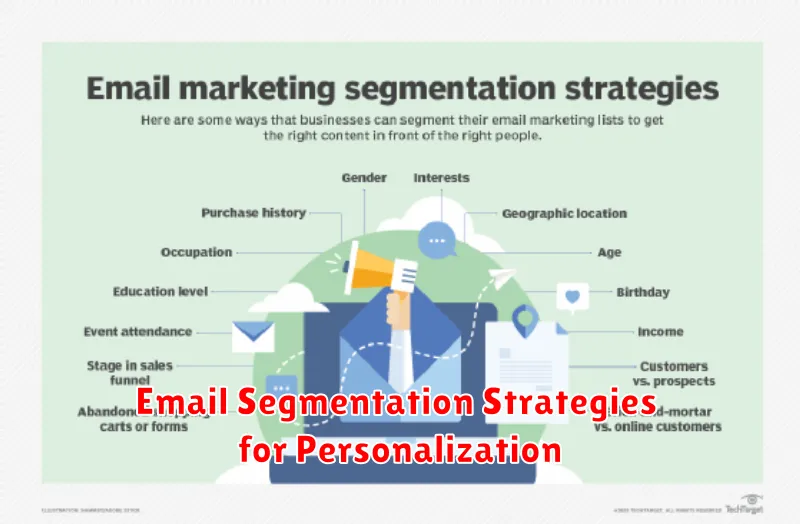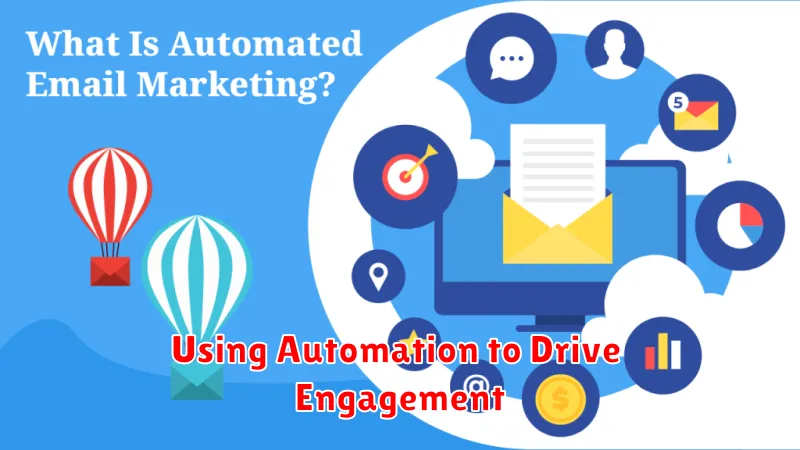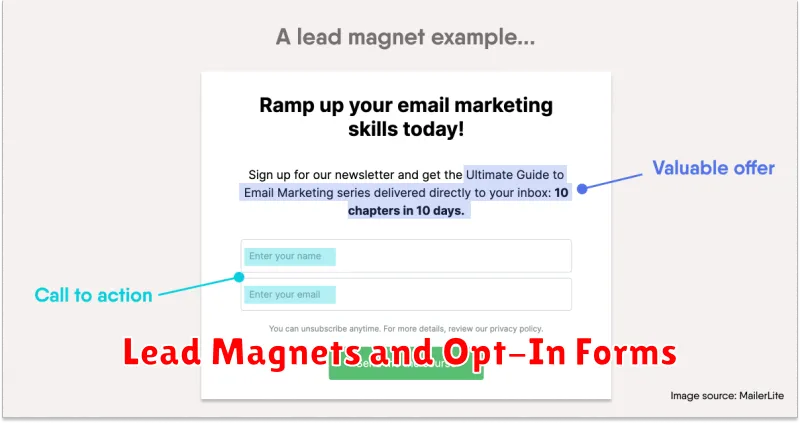Are you tired of sending emails that just end up in the spam folder or, worse, ignored? Do you want to learn how to harness the power of email marketing to drive actual conversions? This article dives deep into proven email marketing tactics that generate real results. We’ll explore strategies to capture leads, nurture relationships, and ultimately transform subscribers into paying customers. We’ll move beyond basic email marketing concepts and explore sophisticated techniques that truly convert.
From crafting compelling subject lines that grab attention to segmenting your audience for personalized messaging, we’ll cover the essential elements of a successful email marketing campaign. Learn how to optimize your email marketing efforts, improve your click-through rates, and boost your ROI. Discover the email marketing tactics that truly convert and leave behind the generic, ineffective strategies that yield little return. Prepare to transform your email marketing into a powerful engine for growth.
Why Email Remains the Highest ROI Channel
Email marketing continues to deliver an impressive return on investment (ROI) primarily due to its targeted reach and cost-effectiveness. Unlike broader advertising methods, email allows businesses to communicate directly with a specific audience of subscribers who have opted in to receive communications. This pre-existing interest translates to higher engagement rates compared to channels like social media or paid search, where capturing attention can be more challenging. Email also offers a remarkably low cost per contact, making it a highly efficient way to nurture leads, promote products or services, and drive conversions. The ability to automate campaigns further amplifies efficiency, allowing businesses to reach large audiences with personalized messages at minimal expense.
Another key factor contributing to email’s high ROI is its measurable impact. Robust analytics provide clear visibility into key metrics, such as open rates, click-through rates, and conversion rates. This data-driven approach allows marketers to refine their strategies, optimize content, and continually improve campaign performance. By understanding what resonates with their audience, businesses can tailor their email communications for maximum impact and ensure every dollar invested yields the highest possible return. This continuous optimization cycle further strengthens email’s position as a top-performing marketing channel.
Finally, email’s versatility contributes significantly to its strong ROI. Email campaigns can serve a wide range of marketing objectives, from driving sales and promoting new products to building brand loyalty and fostering customer relationships. Whether it’s a targeted promotional offer, a personalized newsletter, or a transactional update, email provides a direct line of communication to keep customers informed and engaged throughout their journey. This flexibility allows businesses to leverage email across various stages of the sales funnel and maximize its impact on overall business goals.
Email Segmentation Strategies for Personalization

Email segmentation is crucial for effective email marketing. By dividing your subscriber list into smaller, more homogenous groups, you can tailor your messaging to resonate with specific recipient needs and interests. This personalized approach significantly improves open rates, click-through rates, and conversions, while simultaneously reducing unsubscribe rates and spam complaints. Segmenting allows you to deliver the right message to the right person at the right time, maximizing the impact of your email campaigns.
There are various ways to segment your email list. Demographic segmentation utilizes characteristics such as age, gender, location, and income level. Behavioral segmentation considers factors like purchase history, website activity, and email engagement. Psychographic segmentation delves deeper into subscribers’ values, interests, and lifestyles. Combining these approaches allows for highly targeted campaigns that deliver exceptional value and relevance to each segment.
Implementing a successful segmentation strategy requires a robust email marketing platform and a data-driven mindset. Continuously analyze campaign performance and refine your segments based on the insights gathered. A well-executed segmentation strategy ultimately leads to a stronger customer relationship, increased brand loyalty, and a higher return on investment for your email marketing efforts.
Designing Emails That Get Clicks
Crafting effective marketing emails requires a strategic approach to design. Visual appeal is crucial, employing a clean layout with concise, scannable content. Prioritize a mobile-first design, ensuring readability across various devices. Use high-quality images sparingly and focus on a clear hierarchy of information, guiding the reader’s eye towards the call to action.
The subject line is the first impression, so make it count. Keep it concise, intriguing, and personalized whenever possible. Avoid spam triggers and misleading subject lines. Within the email body, use strong verbs and compelling language to create a sense of urgency and encourage engagement. Personalization goes beyond just using the recipient’s name; tailor the content to their interests and past interactions with your brand.
Finally, testing and analysis are essential for continuous improvement. A/B test different subject lines, calls to action, and email layouts to identify what resonates best with your audience. Track key metrics like open rates, click-through rates, and conversion rates to refine your strategy and maximize the impact of your email campaigns.
Subject Line Optimization
Subject lines are arguably the most crucial element of any email marketing campaign. They serve as the first impression and often determine whether a recipient will open your email or send it straight to the trash. A well-crafted subject line should be concise, compelling, and clearly communicate the value proposition within the email. It should create a sense of urgency or curiosity, enticing the recipient to click and learn more.
Effective subject line optimization requires careful consideration of your target audience. Understanding their interests, needs, and pain points will allow you to tailor your subject lines to resonate with them. Testing different approaches, such as using personalization, emojis, or asking questions, can help identify what resonates best. Additionally, analyzing performance metrics like open rates and click-through rates will provide valuable insights into which subject lines are most effective and inform future campaigns.
Avoid using spam triggers like excessive capitalization, exclamation points, or misleading information. These tactics can damage your sender reputation and decrease deliverability. Focus on delivering genuine value and building trust with your audience through clear and honest subject lines. Prioritizing accuracy and relevance will ultimately lead to higher engagement and better overall results.
Using Automation to Drive Engagement

Automation plays a crucial role in boosting engagement across various platforms. By automating repetitive tasks like social media posting, email marketing, and customer support responses, businesses can free up valuable time and resources. This allows them to focus on crafting personalized and targeted interactions that resonate with their audience, fostering stronger connections and increasing overall engagement.
Automated workflows can be designed to trigger specific actions based on user behavior, such as sending welcome emails to new subscribers or offering personalized product recommendations. This level of personalization enhances the customer experience and encourages further interaction. Additionally, automation helps maintain a consistent online presence, ensuring regular communication with customers and followers, which is essential for keeping them engaged.
Choosing the right automation tools and strategies is key to maximizing effectiveness. Analyze your audience and their preferences to tailor automated messages and content. Continuously monitor and refine your automated processes to optimize performance and ensure they are aligned with your overall engagement goals. This iterative approach will help you leverage automation to its full potential and achieve meaningful results.
Timing and Frequency Guidelines
Understanding the right timing and frequency is crucial for maximizing effectiveness. Generally, the best time to perform an action is when it aligns with natural rhythms or peak periods of activity. Frequency depends heavily on the specific action and desired outcome. Too infrequent, and momentum is lost; too frequent, and resources may be wasted or negative consequences may arise.
Consider factors such as the target audience, the nature of the action, and any resource constraints. For example, communicating with a global audience requires careful consideration of time zones. A complex task may benefit from more frequent, shorter intervals of activity, while a simpler task may be optimally performed less frequently. Resource limitations may necessitate spreading actions out over time.
Establishing a consistent schedule can also improve results. Regularity promotes habit formation and helps maintain focus. However, flexibility is also important. Be prepared to adjust timing and frequency based on ongoing evaluation and feedback. A regular review process can help ensure that the chosen schedule remains optimal and aligned with the overall goals.
Lead Magnets and Opt-In Forms

Lead magnets are valuable incentives offered to potential customers in exchange for their contact information, typically through an opt-in form. These magnets can take various forms, such as ebooks, checklists, webinars, templates, or discounts. The goal of a lead magnet is to attract qualified leads who are genuinely interested in what your business offers. By providing something of value upfront, you build trust and establish a connection with potential customers, nurturing them towards a sale.
Opt-in forms are the mechanism used to collect contact information. These forms typically ask for an email address, and sometimes additional information like name or company. A well-designed opt-in form is concise and easy to complete, clearly explaining the benefits of subscribing. Placement of the opt-in form is crucial for its effectiveness; strategic locations include website headers, footers, pop-ups, and landing pages designed specifically for lead capture.
The synergy between lead magnets and opt-in forms is essential for effective lead generation. A compelling lead magnet entices visitors to provide their information through the opt-in form, initiating a relationship that allows for further engagement and marketing efforts. Analyzing the performance of both the lead magnet and opt-in form is crucial for continuous improvement, ensuring you are attracting and converting high-quality leads.
Creating Nurture Sequences That Sell
Nurture sequences are automated email series designed to build relationships with leads and guide them towards a purchase. A successful nurture sequence provides value, addresses pain points, and positions your product or service as the solution. Start by segmenting your audience to tailor your message. Consider factors like lead source, industry, and engagement level. This allows you to deliver relevant content that resonates with each specific group.
Crafting compelling content is crucial for keeping leads engaged. Focus on providing valuable information, such as educational resources, tips, and industry insights. Avoid overly promotional language. Instead, demonstrate expertise and build trust by showcasing the benefits of your offering. Include clear calls to action in each email, encouraging leads to take the next step, whether it’s downloading a resource, attending a webinar, or scheduling a consultation.
Finally, analyze and optimize your nurture sequences regularly. Track key metrics like open rates, click-through rates, and conversion rates. Use this data to identify areas for improvement and refine your messaging. A/B test different subject lines, email content, and call to action variations to maximize your results and continuously improve the effectiveness of your nurture sequences.
A/B Testing for Higher Open Rates
A/B testing is a crucial tool for optimizing email open rates. It involves sending two slightly different versions of your email (version A and version B) to two separate segments of your audience. These versions can differ in various elements, such as the subject line, sender name, preheader text, or even the send time. By analyzing the open rates of each version, you can determine which performs better and apply those learnings to future campaigns.
When conducting A/B tests, focus on testing one element at a time to accurately isolate the impact of each change. For example, if you’re testing subject lines, keep the sender name, preheader, and send time consistent across both versions. Start with a clear hypothesis about what you expect to improve and track your results diligently. Some email marketing platforms provide built-in A/B testing features, simplifying the process and offering statistical analysis.
Remember to test iteratively. Even small improvements can compound over time and significantly impact your overall email marketing success. After running an A/B test, implement the winning version and then test another element. This continuous optimization process will help you consistently improve your open rates and ultimately drive better engagement with your subscribers.
Metrics to Track and Improve
Tracking the right metrics is crucial for understanding the performance of your efforts and identifying areas for improvement. Key metrics often include conversion rate, which measures the percentage of visitors who complete a desired action, and bounce rate, reflecting the percentage of visitors who leave after viewing only one page. Additionally, tracking customer acquisition cost (CAC) helps you understand the cost-effectiveness of your marketing campaigns. By monitoring these metrics, you can make data-driven decisions to optimize your strategies and achieve your goals.
Beyond these foundational metrics, consider tracking metrics specific to your business objectives. For e-commerce businesses, average order value (AOV) and customer lifetime value (CLTV) are essential. For content-focused websites, metrics like time on page and scroll depth can indicate content engagement. Choosing the right metrics depends on your specific goals, whether it’s increasing sales, driving leads, or boosting brand awareness.
To improve your metrics, focus on iterative testing and optimization. Experiment with different approaches, analyze the results, and refine your strategies based on data. A/B testing is a valuable tool for comparing different versions of a webpage or ad to determine which performs better. Regularly reviewing and adjusting your approach based on metric performance is key to continuous improvement.

